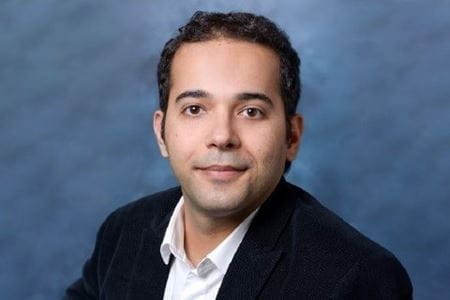Patients who present symptoms of cardiovascular disease might suffer from microvascular disease, the dysfunction of microcirculation in the heart muscle, where blood is not circulating well to surrounding tissue. Microcirculation Research Program scientists at Krannert Cardiovascular Research Center at Indiana University School of Medicine recognize this as an essential target to develop novel medical therapies and innovative solutions. Currently, they are developing translational magnetic resonance imaging (MRI) techniques to investigate coronary microvascular function, to identify new markers to track coronary microcirculation and quantify its response to therapy.
Led by Behzad Sharif, PhD, associate professor of medicine at IU School of Medicine and director of cardiovascular magnetic resonance research at IU Krannert, the Microcirculation Research Program seeks to provide more accurate diagnostic tools in measuring ischemic heart disease and myocardial blood flow (MBF).
Currently, the Microcirculation Research Team is devoting its technology-driven research through the support of two grants:
- National Institutes of Health R01 HL 153430: Noninvasive Testing of Coronary Microvascular Reactivity Using High-resolution Free-breathing MRI Disease. The goal of this project is to develop MRI-based methods for diagnosis and monitoring of microvascular coronary disease, using artificial intelligence.
- Lilly Endowment, Inc. Indiana Collaborative Initiative for Talent Enrichment (INCITE) Program: MRI-guided cardiac catheterization using minimally modified devices on a low-field scanner platform. Through a collaboration with MED Institute, Inc., investigators are evaluating the feasibility of MRI-guided cardiac catheterization using minimally modified devices on a commercially available low-field, ultra-wide bore MRI scanner platform, with the goal of developing new methods for radiation-free interventional procedures that provide more precise diagnosis of cardiovascular disease.
